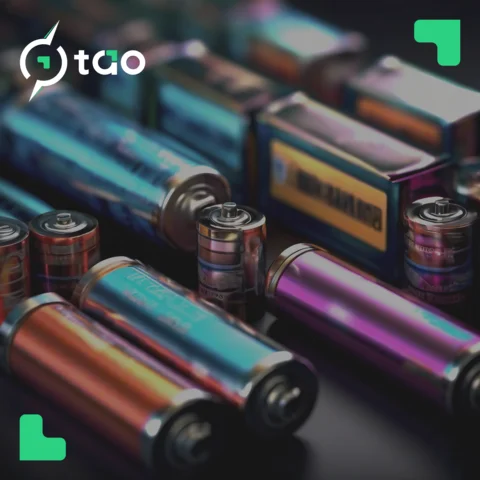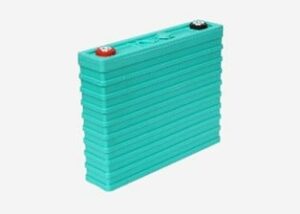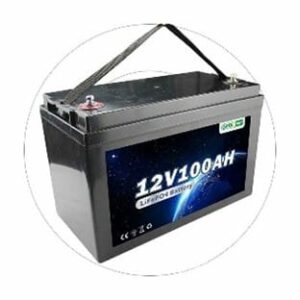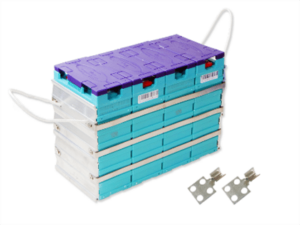
Which Lithium-Ion Battery to Buy?
A quick internet search for a 12 volt 200 Ah lithium-ion battery (LiFePO4) returns prices ranging from $406.00 to $4,185.00, all with seemingly the same advantages and similar characteristics.
How do these batteries differ and how do you choose the most suitable battery for your application?
The overview in this article will help you understand the pros and cons.
First the bad news
The vast majority of resellers insist that their lithium-ion batteries are a “plug & play” replacement for lead-acid batteries. Their websites make such claims as “ready to replace your heavy lead-acid battery”, “makes it a great alternative to lead-acid batteries”, or even “is a direct replacement for lead-acid batteries”. In addition, they post charging characteristics that are compatible with the equipment you already have for your lead-acid batteries.
The truth is that if you regularly charge your lithium-ion battery at 14.4 volts and keep it charged most of the time, as is good practice for lead-acid, your new lithium-ion battery will die very quickly.
Now the good news: You have cost-effective choices
There is no need to replace all the equipment in your electrical installation. With a little planning, you can have an installation that will last a very long time. Simply review the features and settings of your charging equipment and decide how you manage it so that conditions are optimal for your new lithium-ion battery. A suitable BMS (Battery Management System), a few relays, and the right advice can quickly point you in the right direction.
Ready to buy a lithium-ion battery? How do you know what to buy?
From drop-in batteries to cell packs, there are so many choices covering a vast price range. Below is an overview of the main differences and their implications.
The basic component of every lithium-ion battery is the cell with a nominal voltage of 3.2 volts. Cells are assembled in parallel, then in series, to form a battery of the desired voltage and capacity. A BMS is added to protect and hopefully manage the entire installation.
The three key aspects to consider when purchasing a lithium-ion battery are :
- the type of cells used in the battery
- how the battery is assembled
- how the EMS “manages” the battery and the entire installation
1. The different types of Lithium_Ion batteries
There are three major technologies used to manufacture LiFePO4 cells:
| Advantages | Drawbacks | |
Cylindrical | Low manufacturing cost good mechanical stability | Low capacity per cell |
Prismatic/hard shell | Large capacity per cell can work under high load | More expensive to make a little swelling |
Prismatic / pocket | Lower cost than hard shell | Flexible bag with high swelling performs best under light load life is shorter at higher temperatures low capacity per cell |
2. How batteries are assembled
Two different approaches are used:
- “Drop-in”: cells and BMS are placed together in a single container
- “Cell pack”: cells are assembled between compression plates with a BMS
There is no qualitative difference between these two types, but it is important to know what you are paying for, and above all, what the real characteristics are in relation to your needs and expectations. Unfortunately, many online resellers post false, incomplete, or inconsistent specifications, showing that they lack sufficient technical knowledge of their products.
Drop-In | Cell Pack | |
 |  | |
| Advantages |
|
|
Disadvantages
|
|
|
What This Means – Our Point of View:
Connections are the Weakest Link in an Electrical Installation
We have our doubts about batteries made up of hundreds of small-capacity cells connected together. Some are very good and the manufacturer will readily show how they are built (the case of Tesla batteries, for instance). However, it is impossible to find information on how low-priced batteries are assembled.
Golden Rule #1:
Avoid buying any battery made up of hundreds of small-capacity cells (cylindrical or pocket) unless the manufacturer is trustworthy and above-board about how it is built
Prismatic/pocket cells are not well suited to high capacity/high load installations
They will swell quickly if subjected to stress. A simple way to tell if a battery is made up of hundreds of pouches: check the battery’s weight and recommended charging current. For example :
- A 200 Ah – 12 volt battery manufactured with a prismatic/hard shell cell should weigh approximately 32 kg with a recommended charging current of 100 A (or much higher) to achieve advertised performance.
- The “same” 200 Ah – 12 volt battery made with pocket cells weighs approximately 16 kg with a maximum charging current of 30–50 A.
These two batteries are not the same and will certainly not provide the same service.
Golden Rule #2:
Avoid buying pouch cells for high capacity/charging applications (CAUTION: They are never advertised as pouches, so check the weight and the recommended charge current.)
The process of manufacturing lithium-ion batteries has not yet been fully mastered
Although all cells look the same, they do not come off the production line with the same characteristics (e.g., capacity and internal resistance) and differences can be significant. It is essential for all cells in a battery to have exactly the same characteristics, so there are potential issues when there are hundreds of cells in a battery. The top manufacturers painstakingly test and sort cells, using only the best ones and ensuring that they are all compatible within a single battery. Others avoid this costly process, sometimes even resorting to substandard cells, while listing the same characteristics as for good quality cells.
Golden Rule #3:
If the price is too good to be true, the product is not what you think it is.
Customers face disappointment after a few years, when one or more cells enter a death spiral that first reduces the battery’s effective capacity and then kills the good cells that should carry the entire load.
Not all BMS are born equal
All BMS are described as “high performance,” “advanced,” “intelligent,” or even “comprehensive”, but very few come with detailed specifications to substantiate those claims. The main functions of a BMS are to protect and optimize energy availability/battery life.
Golden Rule #4:
If you cannot find detailed specifications of the BMS… do not buy it or the “drop-in” batteries that use this BMS
Below is a review the key functions of a BMS and what to look for in BMS specifications:
Protecting cells against excessively low or high voltage
There are three voltage ranges to consider when using LiFePO4 cells. Although there are some minor variations between manufacturers, the ranges are shown below as a guide:
| Low voltage per cell | High voltage per cell | Description of the range |
| 2.00V | 4.20V | Extreme (outside this range the cell may not survive) |
| 2.50V | 3.65V | Recommended by the manufacturer |
| 2.85V | 3.45V | Optimal for long battery life (outside this range, cells age more quickly) |
A quick internet search shows that many BMS have a fixed cut-off voltage:
between 2.00 V and 2.50 V on the low side
3.75 V or more on the high side
This voltage range will keep your battery “safe” from instant failure but it will not prevent premature aging. These recommended ranges are quite similar to the acceptable range for lead-acid batteries (making it convenient to present lithium-ion batteries as a direct replacement for lead-acid batteries). The same holds true for temperature ranges.
Having this wide voltage range for the BMS is also a good way to avoid very frequent cuts if the cells are of poor quality with large differences in internal resistance and/or capacity.
Golden Rule #5:
Steer clear of any BMS that has a wide cut-off voltage/temperature range or that cannot be adjusted as it may contain a low-quality battery or cells.
An important feature to look for in a BMS: early warning before it cuts power to your installation and leaves you in the dark. This can be challenging on a boat without autopilot, navigation lights, VHF, or maps, especially if power is lost at night, in bad weather, and near the shore.
For short-circuit protection—regardless of what the battery manufacturer claims—you should mount a quick fuse within 30cm of the battery. This will cut power faster than a temperature-controlled (PTC) fuse or electronic system. Check your local electrical regulations and seek confirmation from your insurance company.
Balancing the cells:
Maintaining cell balance when cells are fully charged is essential for long battery life and maximum usable capacity. If one cell has a higher voltage at the end of a charge, it will age faster than other cells, reducing its capacity over time and therefore increasing the imbalance, slowly entering a death spiral. A previous article considered the different approaches to balancing the cells of a lithium-ion battery. Active balancing is what every lithium-ion battery needs.
The three pitfalls of most balancing systems are
- Balancing only occurs when a cell’s voltage is above 3.50 – 3.55 V. In a well-managed system, this should never happen unless the imbalance is very large (and your battery is probably already gasping). In any case, the charger should stop charging before or shortly after this, without giving the system time to balance.
Look for a BMS that is capable of balancing as soon as the cell voltage is above 3.4 V and a certain voltage differential between cells is detected.
- The balancing current is too low to have any effect. Many BMS have balance currents of 35mA. For a 600 Ah battery with a 1% imbalance, it would take over 170 hours of continuous balancing to get back into balance, but that will never happen (see point 1). Look for a BMS that is capable of balancing with a current of at least 1A (2A is better).
- Balancing is triggered based on the voltage differential measured between cells. There are variations in the cells’ internal resistance, however, and with high current this measurement is useless for assessing the state of charge. Therefore, the BMS activates balancing on erroneous information and can actually cause cell imbalance. Ensure that your BMS triggers balancing based on open cell voltage (measured voltage compensated for internal resistance), otherwise it may be better to disable the balancing function.
Optimizing battery life:
This is the key area where a BMS will make a difference to battery life by keeping it within the optimal voltage range. In most cases, the BMS activates relays to allow charging and/or discharging based on the cell’s voltage, temperature, or state of charge. It also alerts you to any drift in key battery parameters, giving you a chance to correct the cause of the problem before the battery suffers.
Some examples :
- it will stop charging once the battery is full (voltage at the upper limit of the optimal range)
- it will stop (or reduce) charging if the temperature is too low
- it will disconnect non-critical loads when the voltage is too low
- it will warn you if there is a cell imbalance
The “optimize” feature of a BMS is what gives you peace of mind and allows you to enjoy the power supplied, knowing that your battery is well maintained.
One last, VERY IMPORTANT question concerning BMS: How to know if the BMS will protect and manage your battery when needed? In the case of almost every BMS on the market, you have no way of knowing. You can only hope that it will do its job when the time comes.
The only way you can be sure is to expose the BMS to real-world conditions and see how it performs. TAO EMS is the only system on the market that can do this, thanks to its simulation function.
Lithium-Ion Batteries for Off-Grid Energy Storage
Low capacity (200 Ah or less) and simple installations (one charging source designed for lithium):
We recommend using a single, good quality drop-in battery with an external EMS. The EMS must have adjustable warning and protection levels, and be able to control external equipment. (Very few battery backups have these features.)
A 12 volt, 200 Ah capacity drop-in battery costs between $2,000 and $3,000 depending on features and quality. It has more usable capacity than a 400 Ah AGM battery and should last at least twice as long, making the drop-in lithium-ion battery option less expensive over a ten-year period.
High-capacity (above 300 Ah) and more complex installations (multiple charging sources):
Choose a good quality cell pack consisting of prismatic/hard shell cells assembled between compression plates, with an external EMS and two heavy-duty relays.
A 12 volt, 400 Ah capacity battery of this type should cost between $3,000 and $3,500 ($2,000 for the cells plus about $1,500 for the two relays and the TAO EMS with current shunt and monitor). The usable capacity is greater than an 800 Ah AGM battery and it will last at least twice as long.
This is expensive compared with low-cost options advertised on the internet, but we firmly believe that the options presented here will prove more cost effective over the long run and ensure long-term dependability.
Vous pourriez être intéressé

A look back at Grand Pavois 2024
An intense week full of encounters! Last week we presented our energy monitoring and optimization solution for nomadic electrical installations at the Grand Pavois trade...

Grand Pavois 2024
TAO Performance will once again be exhibiting at the Grand Pavois boat show from October 1 to 6, 2024. The Grand Pavois La Rochelle is...

TAO Performance presents its Energy Management System (EMS) at VivaTech 2024
From May 22 to 25, TAO Performance was present at the VivaTech trade show at Paris Porte de Versailles. Following this exceptional adventure, we’d like...